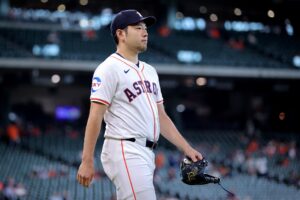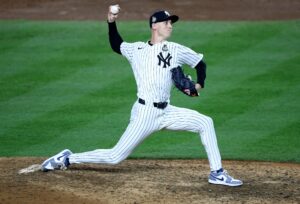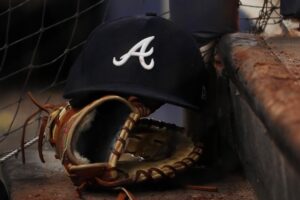Alex Anthopoulous and the Toronto Blue Jays front office went for broke. No question about it. In 2015, he finally got off of his hands and on his phone. Josh Donaldson. Troy Tulowitzki. David Price. Russell Martin. It was a beautiful thing for a Blue Jays fan to watch: complete and utter dedication to the chase of a championship, a sight rarely seen by this city.
They came so close to the goal in mind. All told, the cost was steep, and the Mark Shapiro era began with a need to rebuild and aggressively develop the farm system that had been decimated by these trades. They are now focused on the Blue Jays youth movement occurring in the lower levels of the minors.
Blue Jays Youth Movement
For years, the Blue Jays had built a minor league foundation around patience and slow, well thought out development. They used piggy back systems for starters and keeping high-end offensive talent at a single level for long periods of time. The results were inconsistent and, at times, tedious.
Under Shapiro and Ross Atkins, Blue Jays fans saw a different approach: rapid ascent for young players, no steady scenes, always keeping players moving, and adjusting on the fly. It payed dividends. “Upside” prospects who were years away became young talents knocking on the door, and potential was tested at new levels. Lets take a look at a few prospects who truly excelled and became household names in the Blue Jays prospect pool.
Rowdy Tellez
As a 30th round pick (because of a firm commitment to USC), Rowdy Tellez came into the system with a pedigree, known as a kid who could crush a baseball. Big and powerful with a fluid stroke, he was hard to miss. He broke in during the 2013 in the GCL with mixed results. Over the next two years, his production and improved conditioning lead some to finally view him as a legitimate prospect by the end of the 2015 season.
2016 surprised some people. Tellez, after only 131 at-bats in Dunedin, would start the season with Double-A New Hampshire. By the end of April, pundits who had questioned the placement began to speak. After all, he was only hitting .164/.345/.361/.706, hardly the mark of a top prospect. Rowdy responded by increasing his OPS every month, leading to a final line of .297/.387/.530/.917 with 23 home runs. Strikeout and walk rates improved yet again, and, to the shock of his doubters, he continued to reshape his “un-athletic” body.
Had the Fisher Cats been in a post-season race, he probably would have won Eastern League MVP. Not bad for a chubby 30th round pick. With elite power and a willingness to work, it is hard to see a ceiling for the 21-year-old Tellez.
Sean Reid-Foley
It is easy to assume that a kid that looks and throws like Reid-Foley would develop into a top prospect. Blessed with a 6’4″ 220lbs frame, a fastball that explodes from his hand, and a world-class duster, he was destined to be the leader of this Blue Jays youth movement.
Last year was a speed bump he didn’t see coming. Fastball command was the issue; much like a younger Aaron Sanchez, he couldn’t throw it where he wanted. A 6.3 BB/9 is not going to do a prospect any favors. Despite a mid-season alteration to his delivery, Reid-Foley had a disastrous season between Lansing and Dunedin. Between the two levels, he combined for a WHIP of 1.56 and an ERA at 4.22. He was destined to repeat in the mid-minors, and the prospect clock had started.
However, in 2016, something changed. Reid-Foley came out blazing. He began the year in Lansing yet again, but the results were significantly different. The rejuvenated and refocused Reid-Foley posted a 2.95 ERA over his first 58 innings, striking out north of a batter per inning. He was quickly sent to Dunedin to test his new found control over the strike zone. He didn’t miss a beat. When it was all said and done, he had actually outperformed his Lansing numbers. Reid-Foley posted a 2.67 ERA over 57 innings, striking out 71 in the process. All told: 130 punchouts in 115 innings, while only averaging 3.0 BB/9 and holding hitters to a .190 BA
If his growth continues at this pace, the 21-year-old will be a pitcher to look for at the back end of 2017.
Vladimir Guerrero Jr.
Being 17 years old in professional baseball is challenging beyond measure. Being the 17-year-old son of a former MVP adds to the pressures. Throw in a change of position and a start in a more advanced league than expected, and Guerrero was put into an almost unwinnable situation. Well, he won.
The big-bodied Guerrero ended up showing a more well rounded and diverse skill set than advertised. Everyone knew about the advanced approach and the raw power potential, but this kid showed decent foot speed, an advanced feel for the game, highlighted by his 15 stolen bases, and, most of all, adaptability. Unlike a lot of young pros, Guerrero was able to avoid long, pronounced slumps, staying consistent and showing development every day.
During the course of the season, Guerrero actually managed to improve every month. Guerrero posted monthly OPS figures of .622, .802, .872 from June-August. He finished the year with a line of .271/.359/.449/.808, with a K% at 12.7% and a BB% at 12%. Those are hardly numbers one might expect from a 17-year-old.
With his approach and contact skills, it will be interesting to see how much they decide to challenge him next year. Maybe that challenge will take place in Lansing. Is it March yet?
Angel Perdomo
In Perdomo, the Blue Jays have a unique lefty with size and deception. At 6’6″, he does a beautiful job of hiding the ball, mostly using a high leg kick and a long arm to disrupt hitters. He boasts a 90-94 MPH fastball with a decent change and a developing slider.
At only 22, and with his frame, his velocity will almost certainly see another spike. At this point, he is an arm that has bullied the Midwest League this year. To be successful at the next level, he will need much more than deception. Yet, he has all the tools to become an excellent starter, or even a dominant reliever, as lefties stand almost no chance against him even with a lot of development left to do on his slider. Lefties only managed a .190 average against him, while 42% of their outs came via strikeout. Overall, Angel posted a 3.19 ERA and struck out 156 in 127 innings.
This off season will be big for Perdomo. He needs to adds strength while working on his ability to consistently repeat his delivery. Like most young, developing pitchers, fastball command will dictate his future. If Perdomo starts hot, he could climb through the minors quickly. There are few high-end lefties in the Blue Jays farm system to block his rise to what will probably be a very good career as set-up man in the big leagues.
Obviously, there were many players who had excellent seasons this year, too many to name them all. These are the guys that moved the needle the most. With other prospects in the pipeline, such as Richard Urena, Anthony Alford, Reese McGuire, Harold Ramirez, Jon Harris, Bo Bichette, J.B. Woodman, Joshua Palacios, TJ Zeuch, Max Pentecost, Conner Greene, and Justin Maese, the Blue Jays are in a great place for their future. The 2017 season should be a great one for the Toronto Blue Jays youth movement.
Main Photo:






